Bradgate's ancient ones
Posted by Scrivener on UTC 2021-11-21 07:01
Our reader Scrivener was taken with our recent article on the mountain larches at the treeline in autumn and decided to follow the lowland trail among the remarkable and ancient trees of Bradgate Park in Charnwood Forest, Leicestershire, England.
Inspired, I set off to find a larch, to see for myself the distinctive autumn colour of this oxymoron among trees, a deciduous conifer. Living in the lowlands of the English East Midlands, I can recall seeing stands of forestry larch on a visit to the Scottish Borders. The harsher climate in Scotland suits this alpine specialist better, although evidence of historic planting further south exists in the form of scattered English giants which it is assumed did the bulk of their growing in the eighteenth and nineteenth centuries, when the climate was colder. Not native to Britain, larches are grown in numbers here for their valuable, hard and rot-resistant timber. In southern Britain now, they are mostly found in ones or twos in parks and gardens, grown for their beauty.
I headed for the hills, such as they are hereabouts. But, if the Pennine Hills represent the backbone of England, then the coccyx is decidedly in Leicestershire, in the form of the rocky outcrops of Charnwood Forest. The rocks are ancient, some of the oldest in Britain due to an exposure of Precambrian strata, formed as much as six hundred million years ago, when the area consisted of volcanoes and shallow seas and was to be found somewhere south of the Equator. This great age manifests itself, to my mind, in the quality of the landscape.
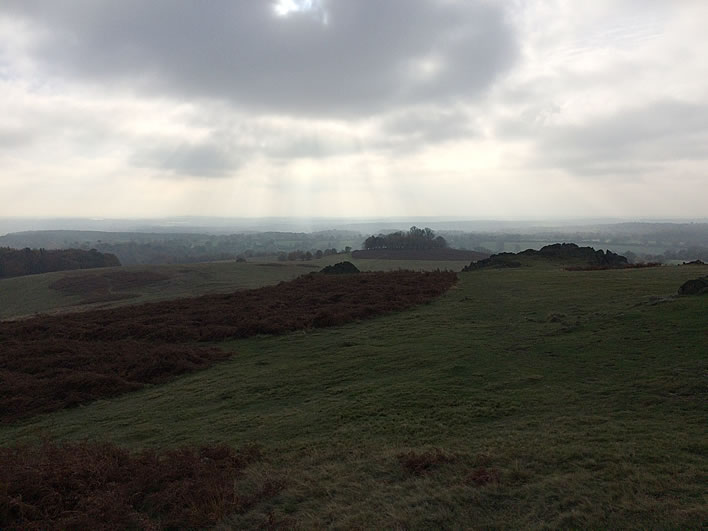
Nowhere is this more apparent than in the medieval deer park of Bradgate, where the search for a larch drew my attention, for the moment, away from the many, venerable oaks which are to be found there.

These are native trees, mostly English oak (Quercus robur), and many are of great age, which is perhaps unsurprising in a tract of land that was first recorded as a deer park in 1241. For much of the intervening centuries, the park was in the possession of the Grey family, who built a fine Tudor mansion there around 1520, probably on the site of an earlier house. Their celebrity, however, crumbled when the family's eldest daughter, Lady Jane, queen for nine days, was executed in 1554, along with her husband and father. Only ruins remain.
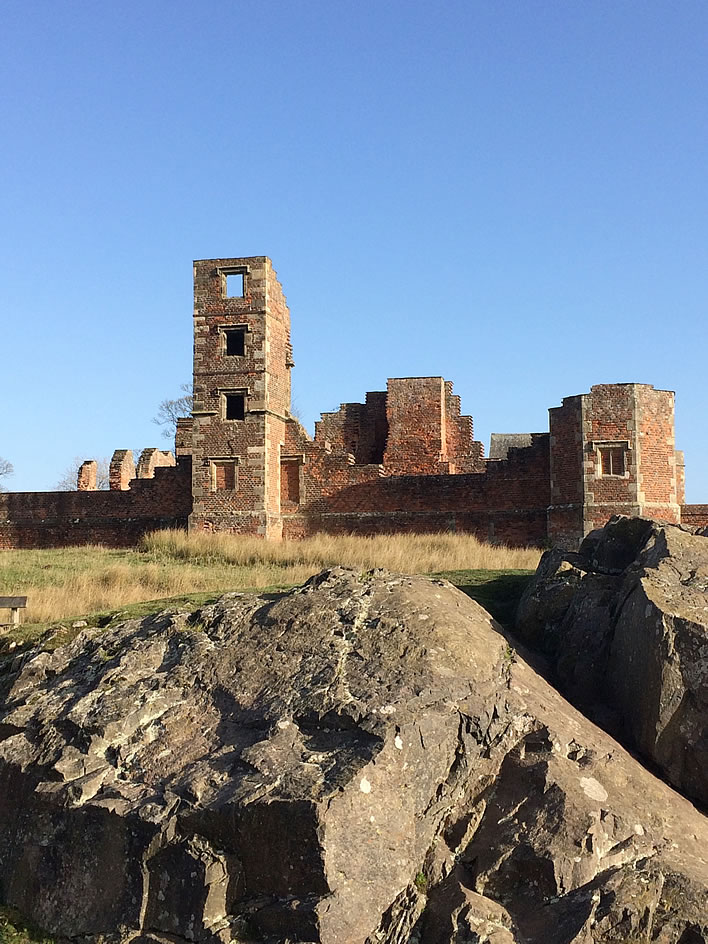
Climbing the bracken-covered slopes behind the ruins, we see the first of several nineteenth century stone enclosures, planted with a variety of non-native trees. One we have met before on this website is the Sweet Chestnut, some examples of which are showing their age.
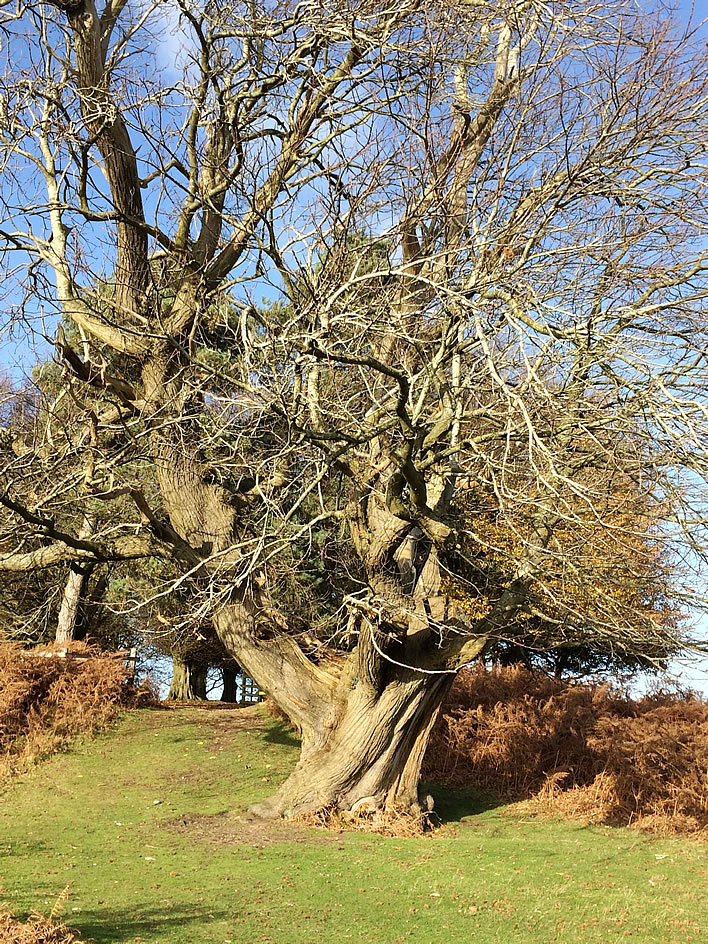
Others, in the shelter of the enclosures, retain their leaves, offering some colour.
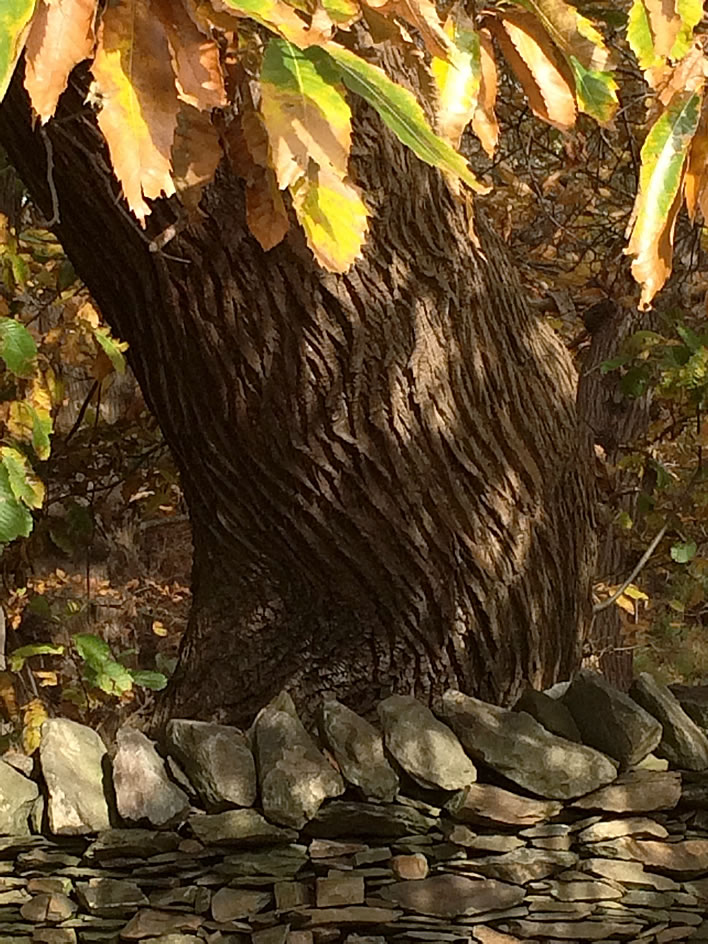
The spiralling bark is characteristic of the species, as is the steeply tapering trunk of this tree which has grown straight, due to the shelter provided by its neighbours.
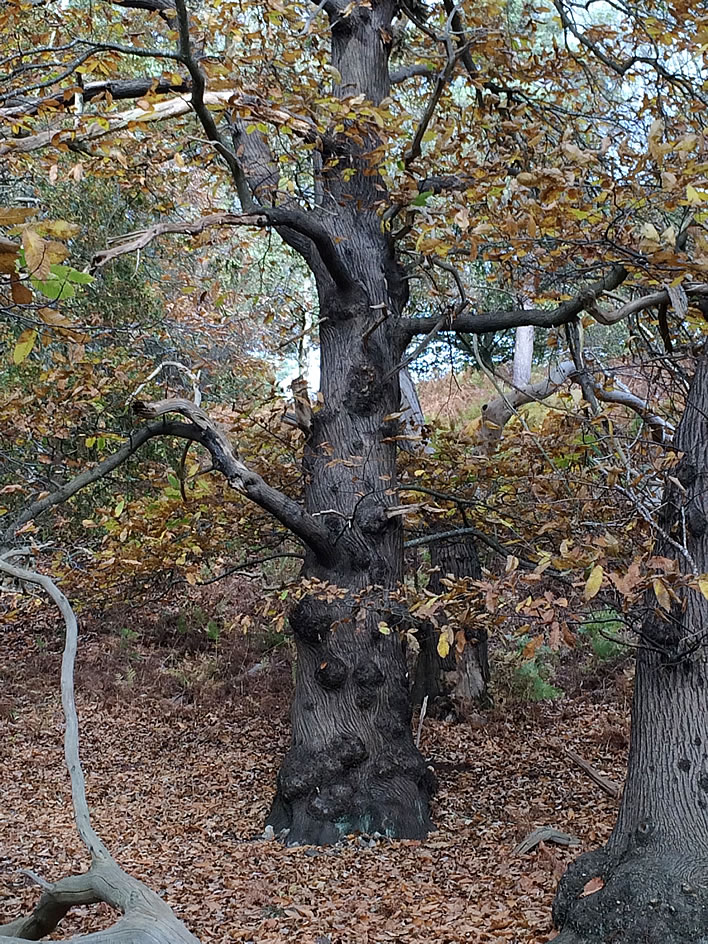
Fallen leaves demonstrate the aptness of 'chestnut' as a description of a horse's coat. Moving on, we round a corner and find ... just the place for a Larch!
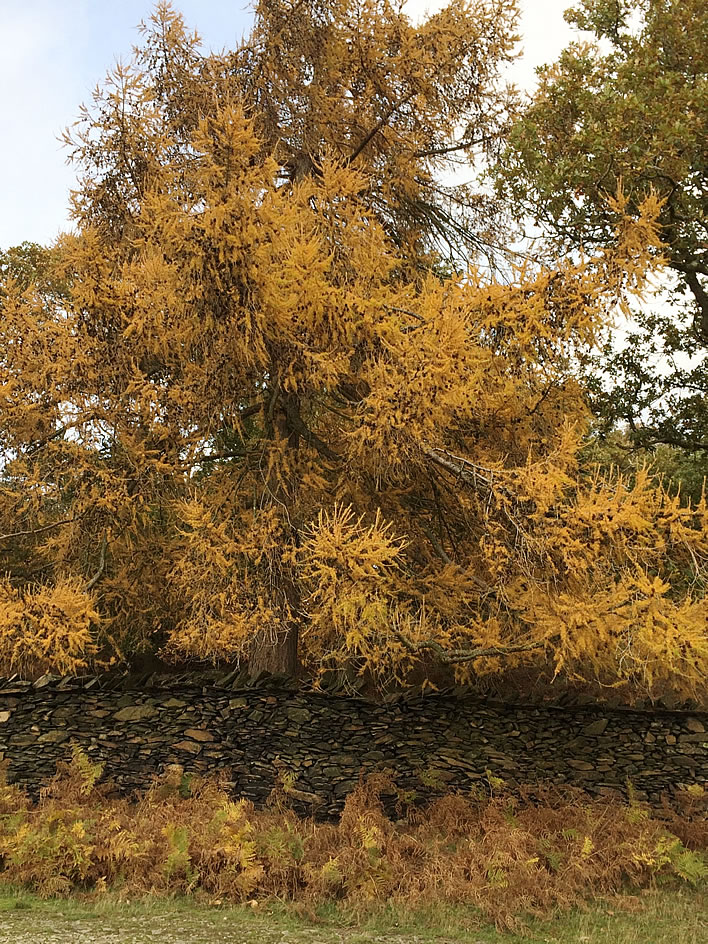
The fieriness is reminiscent of Bonfire Night celebrations, earlier this month.
Glorious as these foreign interlopers are, I am drawn, inevitably, to Bradgate's oaks in all their variety of form and autumn colour. A legend persists locally, that the workers of the estate decapitated the oaks as a sign of respect, at the news of Lady Jane's execution, and it is the case that several appear to have had timber removed from out of the tops of them. Good oak, however, has always been prized for its strength and colour when used for furniture or the beams of a cottage, and the story may owe more to later romanticism than to historical fact.

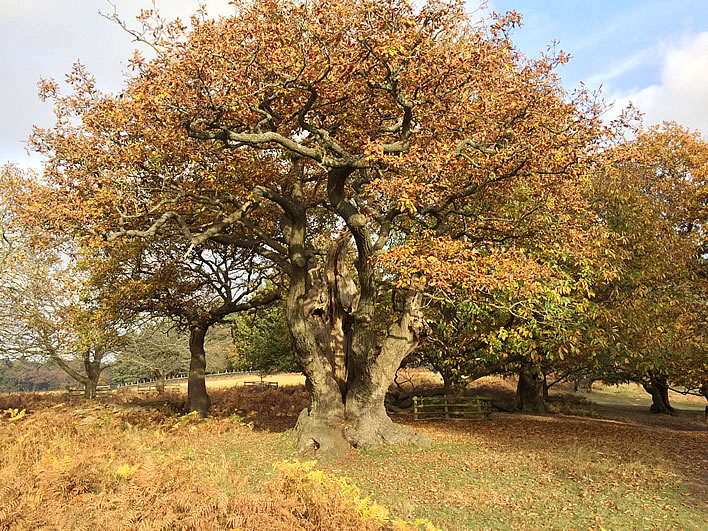

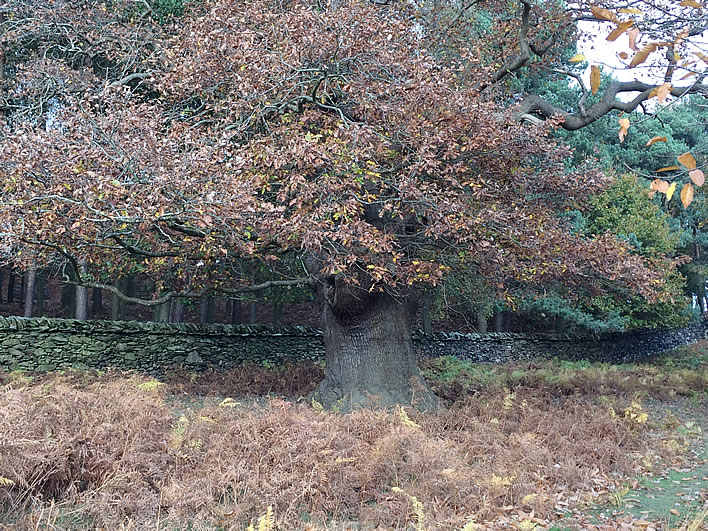
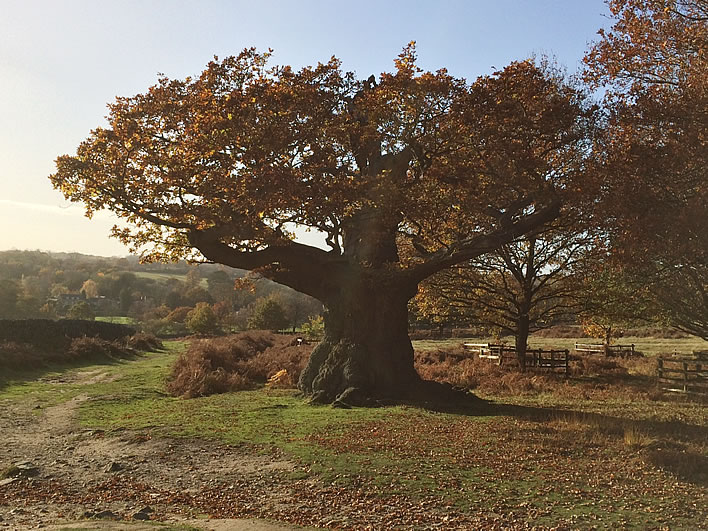
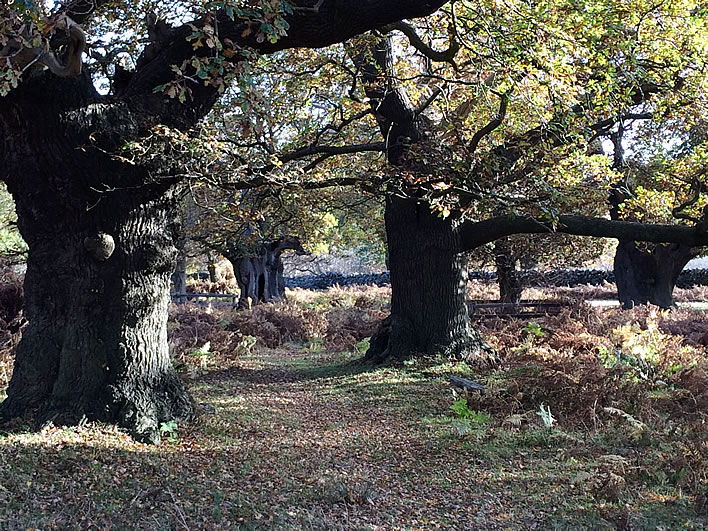
Signs of human activity are somehow subsumed by the workings of volcanoes and the persistence of plant and animal life at Bradgate through long ages. The Grey family had stewardship of the place for almost five hundred years. In the twentieth century, the great wealth of the City of Leicester produced a benefactor, Charles Bennion, who bought the park and gave it in perpetuity to the people of Leicester and Leicestershire. The Greys may have gone; the deer remain.
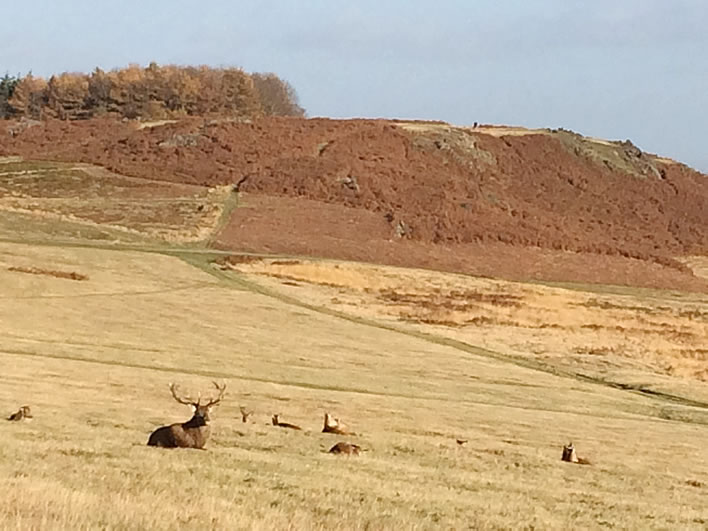
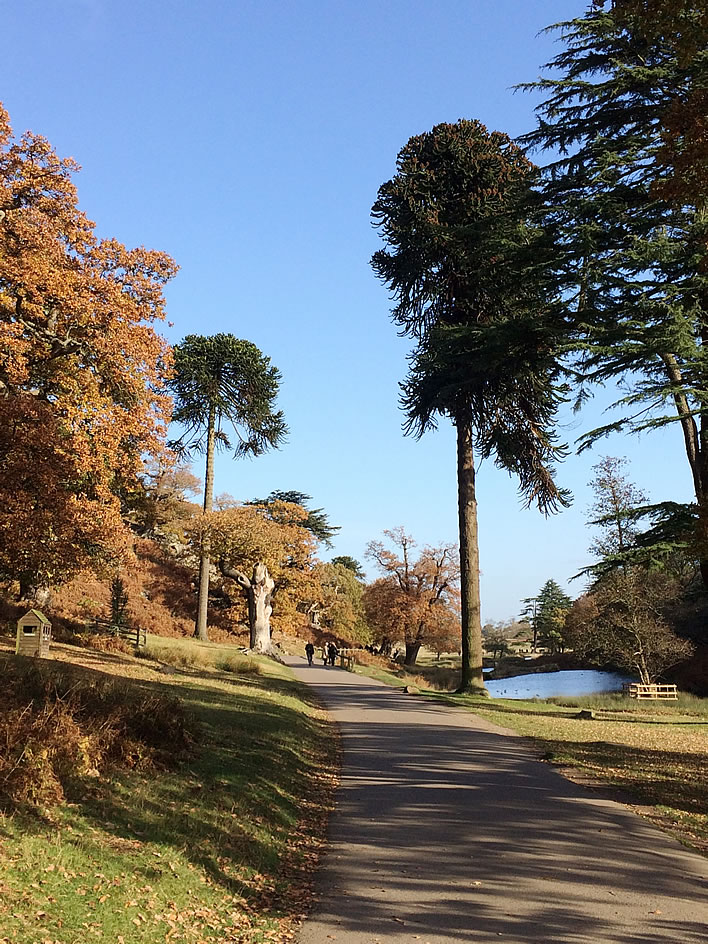
Before we go, the eye is drawn to these two curiosities, Monkey Puzzle trees. As can be seen, monkeys here would gain considerable advantage before ever their mental faculties were troubled, but such is the nature of these handsome denizens of the high mountains of Chile, where they are celebrated as the 'national tree'.
Araucaria araucana was first imported by a Scot, Archibald Menzies, who was offered seeds by way of dessert at a banquet in Valparaiso in 1792. He had the foresight to pocket as many as he ate and succeeded in germinating them on the voyage home. These two specimens probably result from the Victorian fascination for the curious, but curiouser still is the bank to the left, which apparently contains quantities of markfieldite, an attractive, pinkish granite (diorite), named after a nearby village. The stone, whilst comparatively rare in Britain, in South America constitutes great swathes of the Andes. The puzzles' roots must feel distinctly at home.
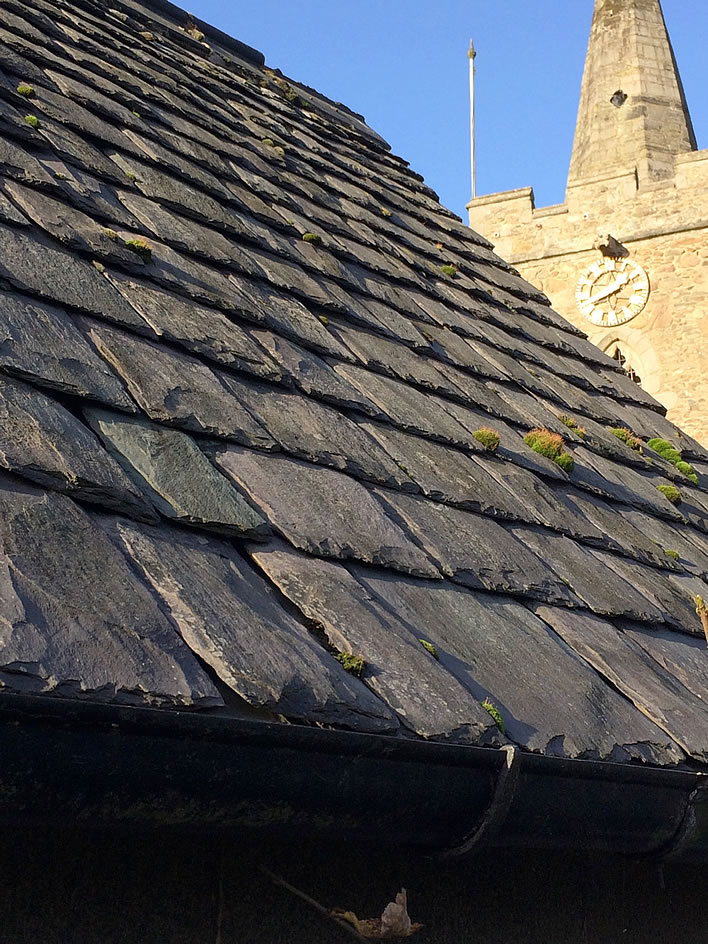
Coda
This area of Charnwood has proved useful in many ways beyond the centuries-old supply of timber and venison. The various rock strata have produced granite and slate. Swithland slate is a prettily attractive material which was apparently quarried from the time of Henry III up until 1887, when the last quarry closed, though the material remained available to the builders of Leicester's finer Edwardian houses. Deep former slate quarries exist in Swithland Woods, which adjoin Bradgate. The quarrying exposed fossils that were given the generic name Charniodiscus in 1958, primitive forms of animal life from Precambrian times first identified as such here, now discovered worldwide.
Pink granite is quarried nearby, its hardness valued throughout the country for use as roadstone, railway ballast and in other forms of construction. And the relative elevation of the anticline proved ideal for Victorian engineers constructing reservoirs to supply industrial Leicester.
In the twenty-first century, the park and woods are given over to leisure, as far as the general populace is concerned, with cafes serving tea, crepes and summer ice-creams: walking, dog-walking, so long as no deer is threatened, and well-regulated cycling and horse riding. There are popular guided walks led by geologists, naturalists and archaeologists. We shall have to see where all this leads. But, as a way to maintain Charles Bennion's gift, it seems to be working. I found the larch and was elated by the the exercise and the autumn colour of this distinctive landscape.
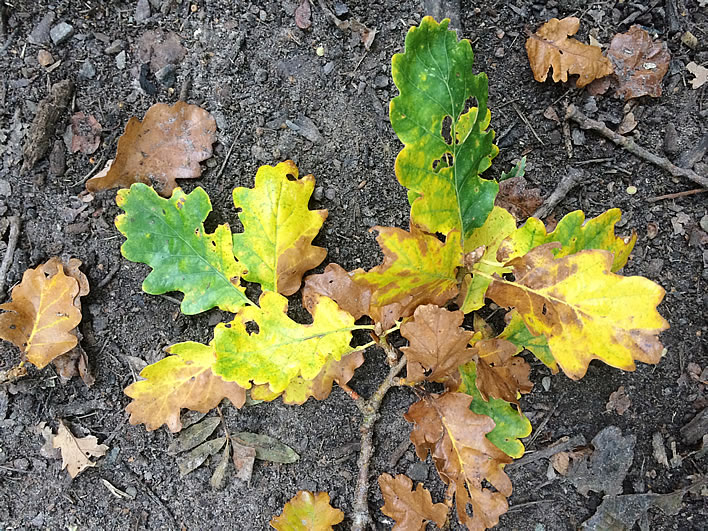
All images in this article ©Scrivener, Figures of Speech. A click on an image will open a larger version in a new browser window.
0 Comments UTC Loaded:
Input rules for comments: No HTML, no images. Comments can be nested to a depth of eight. Surround a long quotation with curly braces: {blockquote}. Well-formed URLs will be rendered as links automatically. Do not click on links unless you are confident that they are safe. You have been warned!